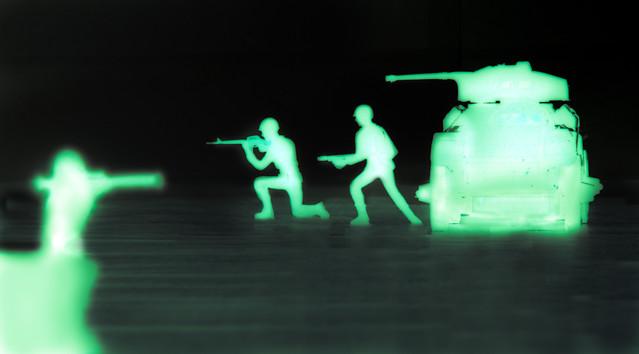
Five years ago this month, a small force of ‘little green men’—soldiers wearing no national insignia—seized control of a police station in Sloviansk, a small village in eastern Ukraine’s Donetsk Oblast. Thus began the second stage of Russia’s campaign to dismember Ukraine, following its illegal annexation of Crimea that March. As the Kremlin’s own statements at the time made clear, Russia’s goal was to establish a semi-independent statelet—‘Novorossiya’ (New Russia)—in Southern Ukraine, and reduce the rest of the country into a kind of Greater Galicia.
The pro-Kremlin insurgents comprised an odd mix of nationalist hotheads and ‘volunteers’ from the Russian special forces. Though Russia supplied them with ‘humanitarian aid’ and sophisticated weaponry, the expectation was that they would mobilise popular support to see the Novorossiya effort through to its conclusion.
But Ukraine did not crumble. Following a presidential election in May 2014, it began to repel the invaders and restore order. To salvage at least some of his gains, Russian President Vladimir Putin deployed regular Russian Army forces in Ukraine. And in September, a political agreement brokered by the Organization for Security and Co-operation in Europe—the Minsk Protocol—essentially froze the situation in place, with lines drawn between opposing tank brigades.
The events leading up to the conflict had begun the previous summer, when the Kremlin increased its pressure on the Ukrainian government to abandon talks for a free-trade and association agreement with the European Union. No longer willing to tolerate another neighbour deepening its ties with the West, Putin wanted to force Ukraine into a customs union with Russia, on the way to establishing a Eurasian Union to counter the EU.
The Kremlin pressure campaign went from trade sanctions, financial incentives and political interventions to outright military aggression in less than a year. But six years later, it is clear that none of it worked. Although 7% of Ukraine remains occupied by Kremlin-backed forces, with defence and humanitarian costs for millions of displaced people weighing heavily on the national budget, Ukraine has made remarkable progress on a number of fronts. It now has a robust free-trade and association agreement with the EU. Following far-reaching economic reforms, its economy has begun to turn a corner. And it has just held the first round of a presidential election that meets Europe’s high standards of freedom and fairness.
The EU deserves some credit for this outcome. It has been a decade since the EU launched its Eastern Partnership, which established a more reliable framework for the bloc’s cooperation with Armenia, Azerbaijan, Belarus, Georgia, Moldova and Ukraine. This initiative, it’s worth recalling, was partly a reaction to the Russian invasion of Georgia the preceding northern summer, when the Kremlin tried to dismember that country by recognising South Ossetia and Abkhazia as independent states. In the event, not even Russia’s closest allies would agree to recognise those occupied territories or legitimise its invasion. And Georgia not only survived—thanks in no small part to the EU—but has since held two fairly contested presidential elections.
Of course, the larger impetus behind the Eastern Partnership was that Russia’s neighbours in Eastern Europe and the South Caucasus had expressed a desire for stronger ties with the EU. Even so, the initiative never posed any threat to the partner countries’ existing arrangements with Russia. Those that had a free-trade agreement with Russia could have one with the EU too.
To be sure, Eastern European countries outside of the EU still have serious economic and security issues to address. Each must do more to fight corruption, ensure the rule of law and open up its economy. And, obviously, frozen or semi-frozen conflicts in Georgia and Ukraine—as well as those involving Transnistria and Moldova, and between Armenia and Azerbaijan (over Nagorno-Karabakh)—will need to be resolved.
But the important thing is that the independence of each of the ‘Eastern partners’ has been preserved. Though countries such as Azerbaijan and Belarus are on very different domestic trajectories, they all have continued on the path towards democracy.
This represents a remarkable victory for the EU, given the Kremlin’s massive efforts to force these countries in another direction. Today, a Ukrainian flag flies in Sloviansk and the little green men who led the attack on its police station five years ago are probably back in Moscow, drunk, disgruntled and wondering what it was all for.